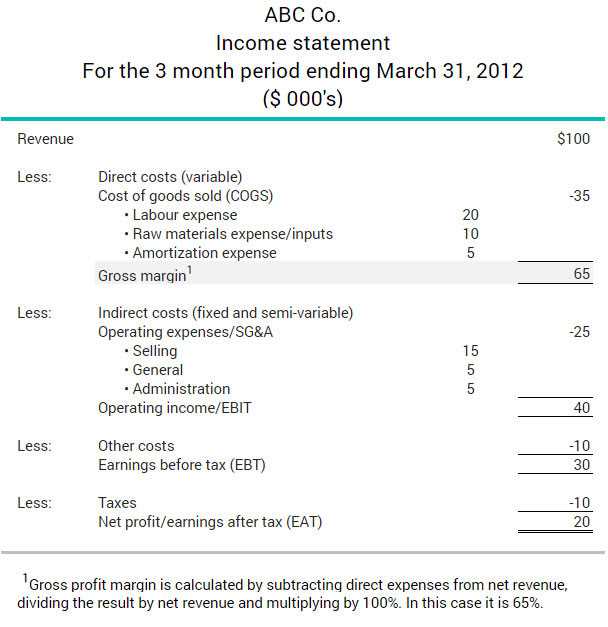Quarterly Revenue Growth Explained: Definition, Example, and Limitations
Quarterly revenue growth is a financial metric that measures the percentage increase or decrease in a company’s revenue over a three-month period. It is an important indicator of a company’s financial performance and can provide valuable insights into its growth trajectory.
Definition

Quarterly revenue growth is calculated by comparing a company’s revenue in the current quarter to its revenue in the previous quarter. The formula for calculating quarterly revenue growth is:
This formula gives the percentage change in revenue from one quarter to the next. A positive value indicates growth, while a negative value indicates a decline in revenue.
Example
Let’s say a company had revenue of $1 million in the first quarter and $1.2 million in the second quarter. To calculate the quarterly revenue growth, we use the formula:
This means that the company experienced a 20% increase in revenue from the first quarter to the second quarter.
Limitations
Additionally, quarterly revenue growth may not always be a reliable indicator of a company’s long-term growth potential. It can be influenced by various factors such as seasonality, one-time events, or changes in pricing strategies. Therefore, it is important to consider the context and underlying factors when interpreting quarterly revenue growth.
What is Quarterly Revenue Growth?
Quarterly revenue growth is a financial metric that measures the percentage increase or decrease in a company’s revenue from one quarter to another. It provides insights into a company’s financial performance and can be used to assess its growth rate over time.
To calculate quarterly revenue growth, you need to compare the revenue generated in the current quarter with the revenue generated in the previous quarter. The formula for calculating quarterly revenue growth is:
| Quarterly Revenue Growth | = |
|---|
For example, if a company generated $1 million in revenue in the previous quarter and $1.2 million in the current quarter, the quarterly revenue growth would be:
| Quarterly Revenue Growth | = | = | 0.2 or 20% |
|---|
A positive quarterly revenue growth indicates that a company’s revenue has increased from one quarter to another, while a negative growth indicates a decrease in revenue. It is important to analyze the reasons behind the growth or decline in revenue to understand the factors influencing a company’s financial performance.
Quarterly revenue growth has its limitations as well. It does not provide a complete picture of a company’s financial health and should be used in conjunction with other financial metrics. Additionally, it may not accurately reflect a company’s long-term growth potential as it only considers short-term changes in revenue.
Overall, quarterly revenue growth is a useful metric for assessing a company’s financial performance and tracking its growth over time. By analyzing this metric along with other financial indicators, investors and analysts can gain valuable insights into a company’s revenue trends and make informed investment decisions.
Example of Quarterly Revenue Growth
Quarterly revenue growth is a key metric used by businesses to assess their financial performance over a specific period of time. It measures the percentage increase or decrease in revenue from one quarter to another. Let’s take a look at an example to understand how this metric is calculated and interpreted.
Suppose a company’s revenue for the first quarter of the year is $1 million, and for the second quarter, it increases to $1.5 million. To calculate the quarterly revenue growth, we use the following formula:
Using the numbers from our example:
Quarterly Revenue Growth = $500,000 / $1 million * 100
Quarterly Revenue Growth = 50%
Additionally, comparing the quarterly revenue growth of different companies within the same industry can provide insights into their relative performance. It allows investors and stakeholders to assess which companies are growing at a faster rate and potentially making better financial decisions.
Limitations of Quarterly Revenue Growth Analysis
While quarterly revenue growth analysis can provide valuable insights into a company’s financial performance, it is important to recognize its limitations. Here are some key limitations to consider:
| 1. Seasonality: | |
| 2. External Factors: | Quarterly revenue growth analysis does not consider external factors that may impact a company’s revenue. Economic conditions, changes in consumer behavior, and industry trends can all influence a company’s revenue growth. Therefore, it is important to consider these factors when interpreting quarterly revenue growth data. |
| 3. One-Dimensional View: | Quarterly revenue growth analysis focuses solely on revenue growth and does not provide a comprehensive view of a company’s overall financial health. Other financial metrics, such as profitability, cash flow, and debt levels, should be considered alongside revenue growth to get a complete picture of a company’s performance. |
| 4. Lack of Context: | Quarterly revenue growth analysis does not provide context for the observed growth. It is important to understand the underlying reasons for the growth, such as new product launches, marketing campaigns, or changes in pricing strategies. Without this context, it may be difficult to assess the sustainability of the growth. |
| 5. Comparability: | Quarterly revenue growth analysis may not be directly comparable across companies or industries. Different companies may have different reporting periods or fiscal years, making it challenging to compare their revenue growth. Additionally, industries with different growth rates may require different benchmarks for evaluating revenue growth. |

Emily Bibb simplifies finance through bestselling books and articles, bridging complex concepts for everyday understanding. Engaging audiences via social media, she shares insights for financial success. Active in seminars and philanthropy, Bibb aims to create a more financially informed society, driven by her passion for empowering others.
